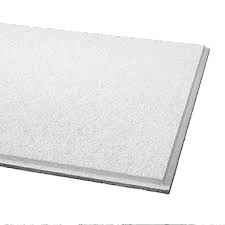Dec . 17, 2024 20:47 Back to list
t grid ceiling system
The T-Grid Ceiling System An Overview
In modern architecture and interior design, the T-Grid ceiling system has become an essential component for various types of buildings, from commercial offices to residential homes. This versatile ceiling solution offers aesthetic appeal, practical functionality, and ease of installation, making it a preferred choice among architects, contractors, and homeowners alike.
What is a T-Grid Ceiling System?
A T-Grid ceiling system, also known as a drop ceiling or suspended ceiling, consists of a framework of metal grid strips forming a grid pattern on which ceiling tiles are laid or hung. The ‘T’ in T-Grid refers to the shape of the main grid components, which resemble a “T”. This system effectively conceals electrical wiring, plumbing, ductwork, and other structural elements, allowing for a clean and polished ceiling surface.
Components of a T-Grid Ceiling
The T-Grid ceiling installation involves several key components
1. Main Tees The primary structural components that run the length of the room. 2. Cross Tees Perpendicular pieces that connect to the main tees, forming a grid pattern. 3. Wall Angle L-shaped strips attached to the walls which provide support for the grid. 4. Ceiling Tiles These can be made from various materials, including mineral fiber, metal, or gypsum, and are designed to fit into the grid.
Benefits of T-Grid Ceiling Systems
1. Aesthetic Versatility T-Grid ceiling systems come in a variety of styles, colors, and finishes, allowing for creativity in design. Ceiling tiles can match or complement the overall aesthetic of a room or building.
2. Acoustic Control Many ceiling tiles are designed to absorb sound, helping to minimize noise levels in busy environments. This makes T-Grid systems particularly popular in office spaces, schools, and healthcare facilities where sound control is crucial.
t grid ceiling system

3. Easy Installation and Maintenance The modular nature of T-Grid ceilings makes them easy to install and replace. If a tile is damaged or stained, it can be individually replaced without disturbing the surrounding tiles. Additionally, access to hidden infrastructure is simplified, allowing routine maintenance without significant disruption.
4. Energy Efficiency Certain ceiling tiles have properties that enhance energy efficiency, either by improving insulation or reflecting light, which can reduce energy costs over time.
5. Fire Resistance Many ceiling tile materials are manufactured to meet specific fire safety standards, providing an additional layer of protection within commercial and public spaces.
Applications of T-Grid Ceiling Systems
T-Grid ceilings are broadly utilized across various sectors
- Commercial Spaces Offices, retail stores, and educational institutions often use this ceiling system to create a professional atmosphere while enabling easy access to services overhead. - Healthcare Facilities In hospitals and clinics, T-Grid systems accommodate lighting, HVAC, and medical equipment, all while maintaining hygiene and aesthetics.
- Residential Settings Homeowners also appreciate T-Grid ceilings for basements and renovations, where quick access to infrastructure is necessary without compromising the overall look.
Conclusion
The T-Grid ceiling system is more than just a functional element in today’s buildings; it represents a harmonious blend of aesthetics, practicality, and efficiency. With its wide range of applications, the T-Grid ceiling not only enhances the visual appeal of a space but also supports modern building functions. As technology and materials continue to evolve, we can expect continued innovation in T-Grid ceilings, solidifying their place in the architecture and interior design landscape for years to come. Whether you are planning a new construction project or looking to remodel an existing space, considering a T-Grid ceiling system could be a pivotal decision, one that marries form and function beautifully.
-
Durable Ceiling T Grid Systems | Easy InstallationNewsAug.29,2025
-
PVC Gypsum Ceiling: Durable, Laminated Tiles for Modern SpacesNewsAug.28,2025
-
Pvc Gypsum Ceiling Is DurableNewsAug.21,2025
-
Mineral Fiber Board Is DurableNewsAug.21,2025
-
Ceiling Tile Clip Reusable DesignNewsAug.21,2025
-
Ceiling T Grid Modular DesignNewsAug.21,2025







